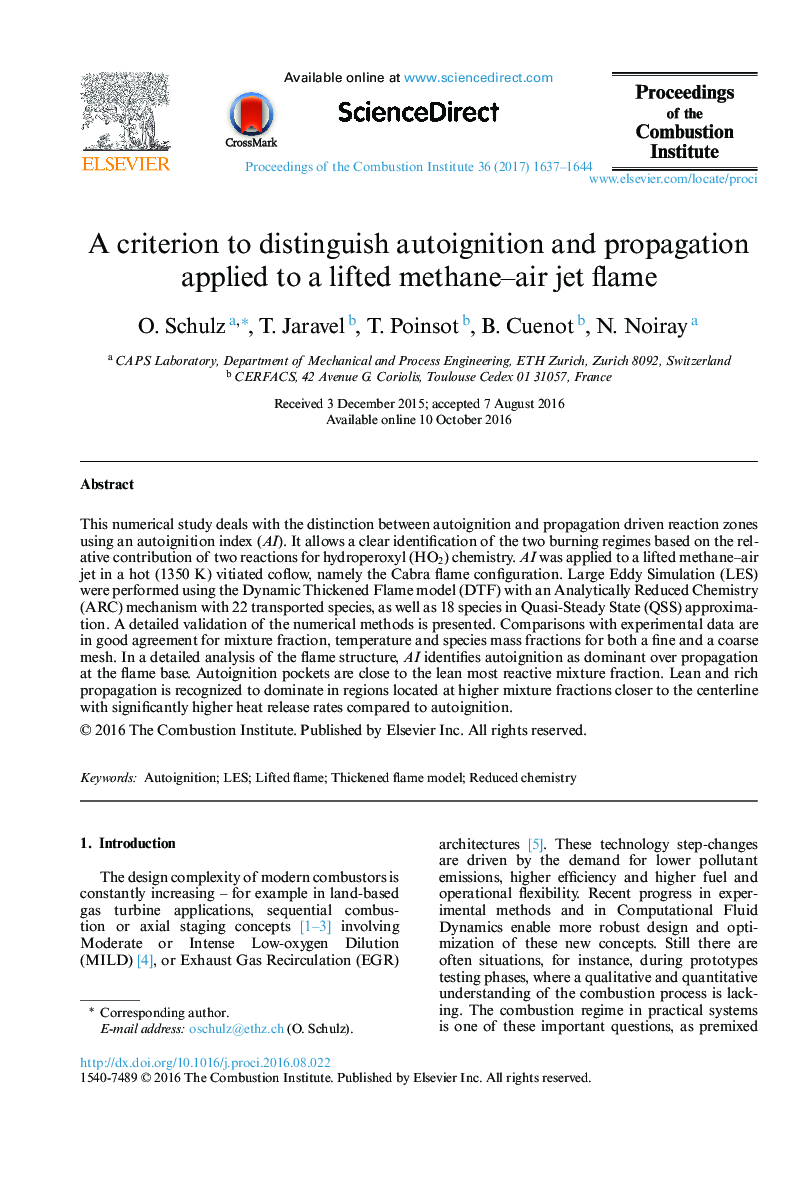| Article ID | Journal | Published Year | Pages | File Type |
|---|---|---|---|---|
| 6477928 | Proceedings of the Combustion Institute | 2017 | 8 Pages |
This numerical study deals with the distinction between autoignition and propagation driven reaction zones using an autoignition index (AI). It allows a clear identification of the two burning regimes based on the relative contribution of two reactions for hydroperoxyl (HO2) chemistry. AI was applied to a lifted methane–air jet in a hot (1350 K) vitiated coflow, namely the Cabra flame configuration. Large Eddy Simulation (LES) were performed using the Dynamic Thickened Flame model (DTF) with an Analytically Reduced Chemistry (ARC) mechanism with 22 transported species, as well as 18 species in Quasi-Steady State (QSS) approximation. A detailed validation of the numerical methods is presented. Comparisons with experimental data are in good agreement for mixture fraction, temperature and species mass fractions for both a fine and a coarse mesh. In a detailed analysis of the flame structure, AI identifies autoignition as dominant over propagation at the flame base. Autoignition pockets are close to the lean most reactive mixture fraction. Lean and rich propagation is recognized to dominate in regions located at higher mixture fractions closer to the centerline with significantly higher heat release rates compared to autoignition.
